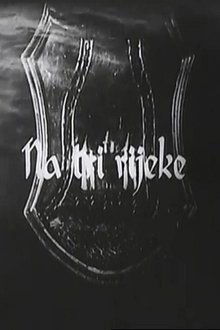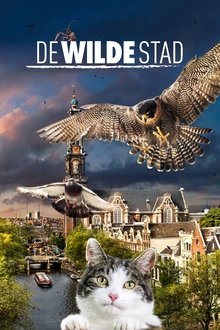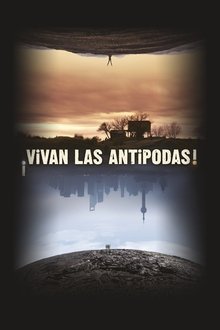"Gunsan is a city of outlanders that has experienced waves of deterioration and revivals. Gunsan, a sparse area prior to 1910, opened doors for workers from all over Korea after it was exploited for rice harvesting during the Japanese colonial period. After liberation, the American military moved in along with large conglomerates that came to build factories, but they are now all shutting down. What remained from this history made the topography and landscape of the town. In the film, cameras float around the lonely landscape of Gunsan. A dancer from Switzerland named Anna mourns the scenes of Gunsan with sorrowful gestures, new musicians in town write a piece of music called City of Outlanders in lament
Related Movies

Sylvia Kristel – Paris (2003)
Sylvia Kristel – Paris is a portrait of Sylvia Kristel , best known for her role in the 1970’s erotic cult classic Emmanuelle, as well as a film about the impossibility of memory in relation to biography. Between November 2000 and June 2002 Manon de Boer recorded the stories and memories of Kristel. At each recording session she asked her to speak about a city where Kristel has lived: Paris, Los Angeles, Brussels or Amsterdam; over the two years she spoke on several occasions about the same city. At first glance the collection of stories appears to make up a sort of biography, but over time it shows the impossibility of biography: the impossibility of ‘plotting’ somebody’s life as a coherent narrative.

New York Portrait, Chapter II (1981)
Chapter Two represents a continuation of daily observations from the environment of Manhattan compiled over a period from 1980-1981. This is the second part of an extended life's portrait of New York.

Nighthouse (2016)
Shot in Havana and processed at Phil Hoffman's Film Farm, Marcel Beltrán Fernández's Casa de la noche explores those same histories from the point of view of an insider, as a lived experience that is evocatively mirrored through ripped and torn celluloid.

Bergen - A City West of Reason (2020)
A poetic and beautiful tribute to the city of Bergen, Norway. Based on archive footage from the last century and packed with Bergen music from Grieg to Vaular.

New York Portrait, Chapter III (1990)
"[Hutton’s] latest urban film, New York Portrait, Chapter III, takes on a unique tone in relation to Hutton’s ongoing exploration of rural landscape. The very fact that Hutton is dealing with older footage, with archives of memory more than immediacy, gives it a different texture than his earlier New York films. Hutton always found the presence of nature in the city, not only in his many shots of sky and vegetation, but also in the geometry and texture of the city itself, which seemed to project an independence from the human." (Tom Gunning)

On Three Rivers (1954)
A historical overview of Sisak, the city on three rivers, from the Roman era to the post-WWII industrialization.

Las Vegas Meditation (2014)
Florent Tillon takes an anthropological lens to Las Vegas, Nevada. What he finds is some curious new species of Americana. (Dorothy Woodend, DOXA Documentary Film Festival)

Cidades Fantasmas (2017)
In Humberstone (Chile), little was left of the saltpeter's prosperity. Near the old Fordlandia (PA), squatter houses are the last signs of the city built by Henry Ford. Armero (Colombia), had its population wiped out by the eruption of the Nevado del Ruiz volcano in 1985. Twenty-five years after a flood, ruins of Villa Epecuén (Argentina) expose the remains of the old water station.

Moving City (2020)
A city person discovers twelve paths with a different sense of time. What makes us come alive? Will we go on the same way?

Rotterdam 2040 (2013)
Rotterdam 2040 is a film about the city’s future, departing from the principle of Gyz La Rivière that you can’t look ahead without considering your past (something that hasn’t always been Rotterdam’s strongest feature). At high speed, La Rivière reconstructs the history of Rotterdam from the time before the bombings until now, and expands the developments to the year 2040 (100 years after the bombing and the 700th anniversary of the city). La Rivière made a specific choice to expose his personal vision, which is sometimes radical or a little absurd. So no experts and no talking heads, but an assault of old and new imagery, held together by La Rivière as the narrator of the film. Although Rotterdam 2040 deals with architecture and urban renewal, it is actually a film about people. The subjective experience of the city by its (future) occupants mainly determines the parade of architectural blunders and suggestions for the future. All tongue-in-cheek of course.

One Day in Rijeka (1955)
A short documentary film that follows and describes the city of Rijeka through one day - its port, shipyard, fish market, streets, bridges, parks, houses and the old town of Trsat.

Oyler (2015)
A Cincinnati public school fights to break the cycle of poverty in its Urban Appalachian neighborhood, where senior Raven Gribbins aims to become the first in her troubled family to graduate and go to college. When Principal Craig Hockenberry's job is threatened, it becomes clear it's a make-or-break year for both of them.

Urbanized (2011)
A documentary about the design of cities, which looks at the issues and strategies behind urban design and features some of the world's foremost architects, planners, policymakers, builders, and thinkers.

Wild Amsterdam (2018)
The city from the unique perspective of the many wild animals and plants that inhabit it. Seen through the eyes of the adventurous urban cat, Abatutu.

¡Vivan las Antipodas! (2011)
What would be the shortest route between Entre Rios in Argentina and the Chinese metropolis Shanghai? Simply a straight line through the center of the earth, since the two places are antipodes: they are located diametrically opposite to each other on the earth's surface. During his visits to four such antipodal pairs, the award-winning documentary filmmaker Victor Kossakovsky captured images that turn our view of the world upside down.

Zagreb in a Metropolitan Light (1934)
A documentary about Croatia's capital aspirations of becoming metropolis. Camera follows everyday life of random city-goers. Title cards bring interesting plot twists, indeed making this film a mockumentary. One of the earliest preserved pieces of cinema in Croatia.

Jimmy on the Run (2016)
A 7-minute portrait of natural born fashion and street photographer 'Jimmy on the Run'. Coming from rural China, he now roams the streets of Amsterdam always chasing the next best picture. This short film shows Jimmy's passion for the lens, his dynamic lifestyle and his struggle with family expectations.

Jetman Dubai : Young Feathers (2015)
We mark a new milestone in the chapter of human flight. Join Jetman Yves Rossy and his protege, Jetman Vince Reffet as they explore the limits in the city of dreams. "The real dream is to be completely free"

Hidden Cities (2010)
"The theme of the film HIDDEN CITIES is personal urban perceptions, which we call 'the city'. The city, as a living organism, reflecting social processes and interactions, economic relations, political conditions and private matters. In the city, human memories, desires and tragedies find expression in the form of designations and marks engraved in house walls and paving slabs. But what the city really is under this thick layer of signs, what it contains or conceals, is what we are researching in the HIDDEN CITIES project. The source material for the film are 9 sequential photo works created by Gusztáv Hámos between 1975 and 2010. Each of these 'city perceptions' depicts essential situations of urban experiences containing human and inhuman acts in a compact form. The cities in which the photo sequences have been made are Berlin, Budapest and New York – places with a traumatised past: Wars, dictatorships, terrorist catastrophes."